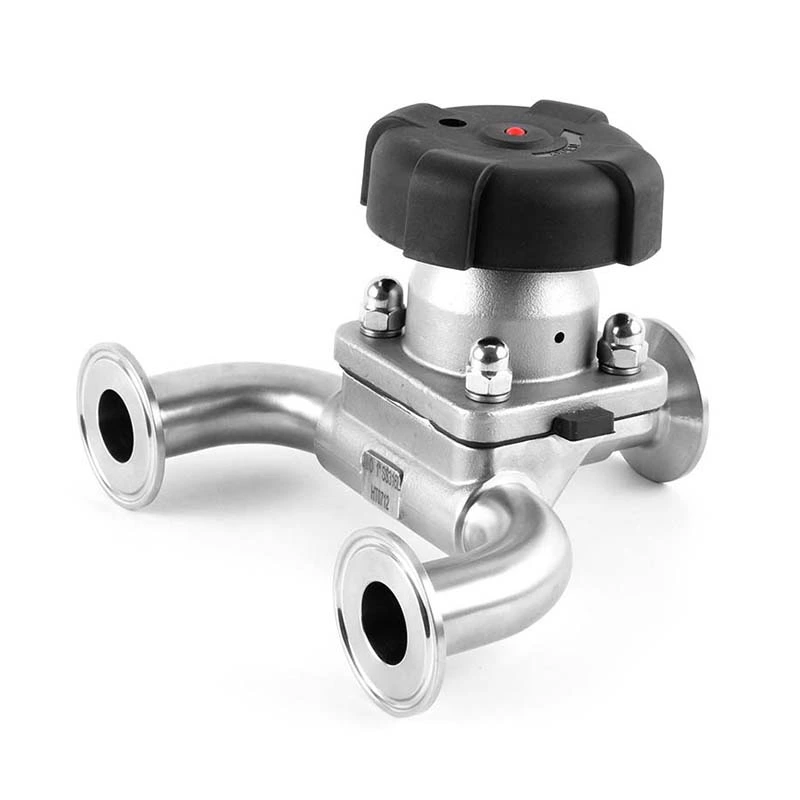What Are The Installation, Use Characteristics And Applications Of Diaphragm Valves?
Sanitary Diaphragm Valve has a simple structure, small fluid resistance, and larger flow capacity than other types of valves of the same specification; it has no leakage and can be used to regulate high-viscosity and suspended particle media. The diaphragm isolates the medium from the upper cavity of the valve stem, so the medium will not leak out without packing.
However, due to the limitations of the diaphragm and lining materials, the pressure resistance and temperature resistance are poor, and it is generally only suitable for 1.6MPa nominal pressure and below 150℃.
1 Applicable safety regulations must be followed.
2 Ensure that the pipeline is free of impurities before installing the valve, otherwise it will cause damage to the valve.
3 Connect the valve and pay attention to align the pipeline.
4 For all valves, the actuator must be disassembled before welding on the valve body.
5 When replacing the diaphragm, keep the diaphragm in the open position connection with the sealing surface, and then separate the diaphragm from the sealing surface.
1) Cut off the air source to lift the diaphragm and detach it from the sealing surface.
2) Cross-remove the four screws on the valve body to separate the actuator from the valve seat, cut off the air source of the lower cylinder, inflate the upper cylinder, and replace the diaphragm.
3) Inflate the lower cylinder to retract the diaphragm.
4) Align the sealing surface of the diaphragm and the valve seat, cross-install the fixing screws, and repeatedly ventilate and move several times.
5) After closing the diaphragm valve for leak testing, it can be used normally.
High-performance valve types of diaphragm valves:
The solenoid valve does not work after power on
Check whether the power wiring is bad → reconnect the wiring and connectors
Check whether the power supply voltage is within the ± working range-→ adjust to the normal position range
Is the coil desoldering → re-welding
The coil is short-circuited → replace the coil
Is the working pressure difference inappropriate → adjust the pressure difference → or replace the corresponding solenoid valve
The fluid temperature is too high → replace the corresponding solenoid valve
Is the main valve core and the moving iron core of the solenoid valve stuck due to impurities → clean it. If the seal is damaged, replace the seal and install the filter
Liquid viscosity is too high, frequency is too high and life is over → Replace the product
Solenoid valve cannot be closed
Features of diaphragm valve:
1. Elastic sealing opening and closing parts, the valve body sealing weir groove adopts arc design structure to ensure no internal leakage;
2. Streamlined flow channel reduces resistance;
3. The valve body and cover are separated by the middle diaphragm, so that the valve cover, valve stem and other parts above the diaphragm are not corroded by the medium;
4. The diaphragm is replaceable and the maintenance cost is low
5. Visual position display switch status
6. A variety of surface polishing technologies, *, no residue in the normal position.
7. Compact structure, suitable for small space.
Advantages of diaphragm valve:
Can be installed in any position, the flow direction of the medium does not affect the opening and closing of the valve. The valve body uses a ball weir groove seal, and the structure can extend the service life of the diaphragm. Provide all current clamping and welding industries.
